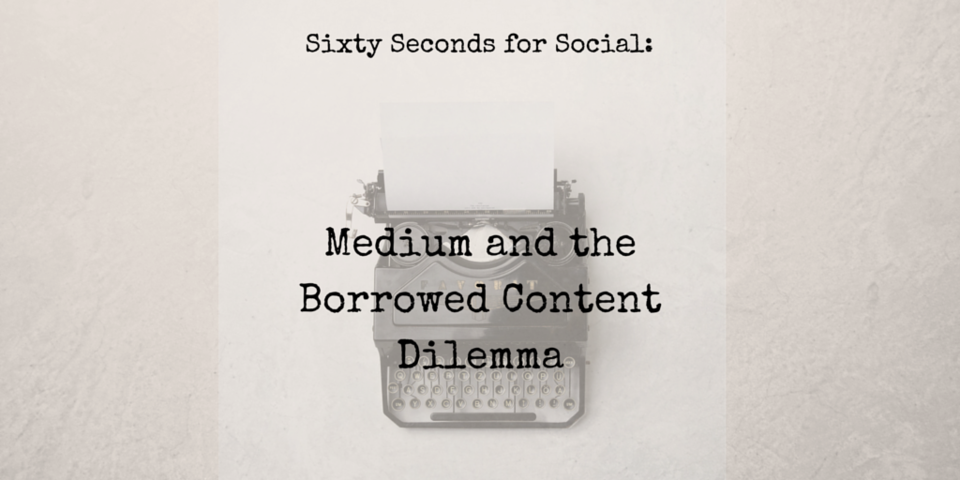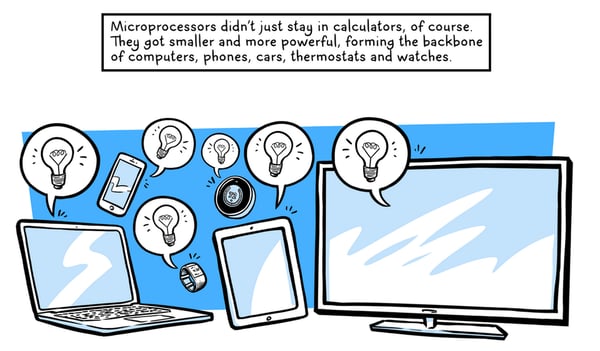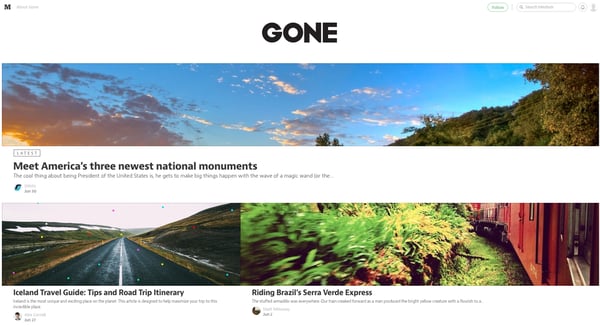Sixty Seconds for Social: Medium and the Borrowed Content Dilemma

Posted By Stephanie Malkus on August 05, 2015
Last week, we wrote about the simple, yet useful nature of Medium. While there are valuable thought leadership and brand opportunities on this blogging platform, one still might question: Are there benefits to blogging on what is essentially “borrowed land”?
This question is explored in detail in a recent article by The Next Web: The truth about blogging on Medium. The article defines the borrowed content dilemma, framed by the idea of “digital sharecropping.” Simply put, this refers to sharing and creating content on a website you don’t own (i.e. Facebook, Twitter, et al). The greatest challenge with the borrowed content model is if, for example, Facebook (or another shared content platform) were to shut down tomorrow, all of your valuable FB posts would vanish. But even with that risk, the idea of borrowed/digitally sharecropped content isn’t a bad thing; in fact, it can be a vital part of any successful content plan.
Before proceeding with a site like Medium, brand content managers must first measure if the benefits of this type of platform (especially where blog content is concerned) outweigh the potential negatives. Here’s a pros and cons list to make the assessment process easier.
Pros
Gaining a Captive Audience
Yes, it’s only one pro, but it’s a high-value one. Think about it: a common hurdle with hosting a blog on your own website is building an audience from virtually nothing. With Medium, you have a built-in audience of 20 million unique visitors each month. Referred to by many as an “Instagram for articles,” people who come to Medium are looking to read quality content, and share said content. Medium blogs cover a wide range of topics, but the most widely-read stories on the platform are from the tech and business communities.
One of Medium’s “content channels,” Backchannel, is a great example of the strength of the site’s tech community. Backchannel’s editor-in-chief is tech journalist Stephen Levy, and contributors include tech business leaders and even a regular comic strip sponsored by Intel.

A Beautiful Blog
Here’s another pro: Your Medium blog will be beautiful, which is important. Yes, creating quality content is Job One, but quality content on an ugly webpage will make it doubly hard to attract readers. Medium takes care of the design for you (with some visual opportunities for you as well), and they do a great job.
Cons
Limited Branding Opportunities
The simple design of the platform allows for distraction-free editing and posting, which while appealing in its own right, it does also severely limit visual branding opportunities on the site. Branding efforts on Medium are subtle, keeping the focus on the content. You can see an example of this in the travel content channel by Marriott -- the only branding is reflected in a recent post by Orbitz:

For readers, this is a pro: finding quality content without branded images being flashed in their face. It’s also a reminder to brands to focus on providing value in the content being shared on Medium, lest that content get overlooked.
That doesn’t mean Medium doesn’t see the value of brands. Just recently it began to test native advertising opportunities with a select group of partners. Expect more soon.
Decreased Visibility
Although Medium’s audience continues to grow, many people are still unfamiliar with the site’s setup/functions of the site. While it may be easy to use for some, there are still those who don’t understand how to use Medium says The Next Web. This can negatively impact the visibility of your content. Some of this is within your control, such as tagging appropriately, but much of it relies on your relevant audience understanding the finer points of Medium’s functions.
To gain visibility on Medium, your articles must be recommended by other readers to get into the “Top Stories” section. Some of Medium’s less user-friendly functions may keep your audience from finding your story. Of course, this problem can be minimized by spreading the reach of your Medium content beyond the site itself. Take advantage of all of your social networks and spread the word about your posts on Medium. Don’t expect your audience to find you without a little help.
Limited Analytics
Also, as brands work to build awareness on social, it’s crucial to measure the success of your marketing efforts. Medium offers some analytics, but at this point they don’t deliver a wealth of knowledge. The provided metrics include reads, read ratio, views, and recommendations, which, while helpful, don’t paint a complete analytical picture.
Final Thoughts
As with all social media, it’s never a good idea to put all your eggs in one basket, As we mentioned in part one of our post, Medium is just one piece of a larger content strategy. Brands like GE, Starbucks, and even the White House have had great success reaching target audiences by using Medium as an extension of already thriving social content machines.
If you’re a startup using Medium, don’t expect other readers to automatically read your blog posts. If you want your brand to be found (and recognized) on Medium, start by creating a strong social following on Twitter, Facebook, etc. and then incorporate Medium as an additional tool to amplify your brand’s online voice. Remember, Medium is another tool in your social tool belt. Use it to its (and your brand’s content) greatest advantage.



